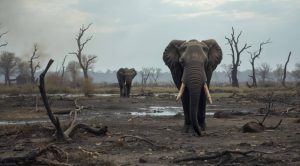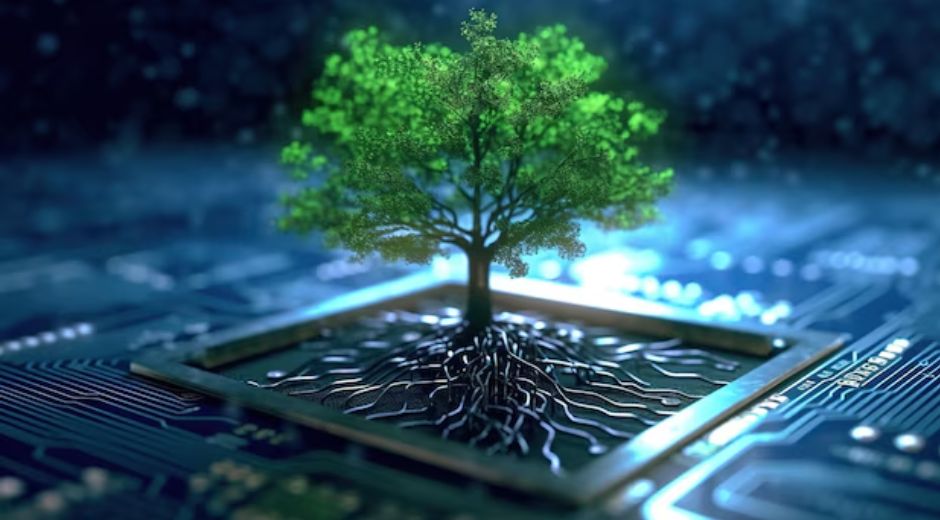Exploring the Rainforest Canopy
The Rainforest Canopy is one of the most vibrant and complex ecosystems on Earth. From a distance the rainforest can look like a continuous sheet of green. Up close the canopy reveals a layered world full of life where plants climb toward sunlight and animals move through a maze of branches and leaves. Understanding this unique zone is vital for anyone who cares about nature conservation and biodiversity. This article explains what the canopy is why it matters and how we can help preserve it.
What Defines the Rainforest Canopy
The Rainforest Canopy is the upper layer of trees and foliage that forms a roof over the forest floor. It captures most of the sunlight and acts as the primary site for photosynthesis in a rainforest. This zone often includes emergent trees that rise above the general level of the canopy together with a continuous cover of crowns from many tree species. The structure creates microclimates with variable light air humidity and temperature that are very different from conditions on the ground.
This elevated forest layer supports a huge array of plants such as epiphytes vines and canopy specialists that rarely if ever descend to the floor. It also hosts animals from tiny insects to large mammals and many bird species that depend on the canopy for food shelter and movement.
Why the Rainforest Canopy Is a Biodiversity Hotspot
The canopy offers an abundance of niches which makes it a cradle for biodiversity. Many species have evolved to exploit the unique resources found up high. Insects pollinate flowers and feed on leaves. Orchids bromeliads and ferns grow attached to branches absorbing moisture and nutrients from the air. Birds nest on high branches and use their mobility to move between food sources. Mammals such as monkeys and sloths rarely touch the ground and rely on the canopy for nearly all their needs.
This high diversity has ripple effects that support life throughout the entire forest. Many canopy species interact with understory species in ways that help maintain the balance of the ecosystem. For instance fruit eating animals disperse seeds that allow tree regeneration while pollinators ensure genetic exchange for many plant species. Maintaining canopy health helps sustain the full web of life in a rainforest.
The Climate Role of the Rainforest Canopy
Beyond biodiversity the canopy plays a major role in regulating climate. Canopy leaves intercept sunlight and reduce soil evaporation which helps maintain stable humidity levels. Trees in the canopy also release water vapor through transpiration which contributes to local and regional rainfall cycles. These processes help cool the landscape and support weather patterns that people rely on for agriculture and water supply.
In addition the canopy stores large amounts of carbon in living tissue. Healthy canopy forests act as significant carbon sinks removing carbon dioxide from the atmosphere and slowing the rate of climate change. When canopy trees are lost through logging or fire that carbon is released back into the atmosphere which worsens global warming.
Threats Facing the Rainforest Canopy
The canopy faces many pressures caused by human activity. Logging fragments the continuous canopy leaving gaps that alter microclimates and reduce habitat connectivity. Unsustainable agriculture and cattle raising clear large areas to make room for fields and pastures. Fires even if they start on the ground can climb into the canopy turning evergreen forests into degraded lands where the original species cannot return easily.
Climate change itself poses an additional threat by altering rainfall patterns and increasing the frequency of extreme events that can damage canopy structure. Invasive species and pollution add further stress that can push canopy communities beyond recovery thresholds.
Conservation Strategies for the Rainforest Canopy
Protecting the canopy requires a mix of science policy and community action. Establishing protected areas that include large contiguous tracts of canopy helps preserve vital habitat. Restoring connectivity using corridors of native trees allows wildlife to move between forest patches and supports genetic diversity. Sustainable forestry practices that prioritize selective harvesting and long term forest health can reduce damage to the canopy while supporting local economies.
Community led conservation often proves effective because local people hold deep knowledge about the landscape and depend on its resources. Supporting programs that provide alternative livelihoods education and sustainable agriculture incentives can reduce pressure on canopy forests. For readers who want to learn more about nature and conservation topics visit bionaturevista.com where you will find guides research and stories focused on natural habitats.
How Scientific Research Reaches the Canopy
Studying the canopy has long been a challenge due to its height and complexity. Researchers use canopy towers rope access platforms and even drones to observe wildlife monitor microclimates and collect samples. New sensor technologies and data tools allow scientists to map canopy structure and track changes over time with unprecedented detail. Remote sensing from satellites and aircraft complements ground based work creating a fuller picture of canopy health at landscape scale.
Companies that develop field gear and monitoring devices play a role in enabling research and conservation. For example some suppliers provide lightweight durable cameras and sensors that can be installed high in trees to record animal behavior or capture environmental data. If you are looking for tools and support to equip a canopy study you may find resources at Fixolix.com which offers a selection of equipment useful for field research and habitat monitoring.
Enjoying the Canopy: Responsible Eco Tourism
Eco tourism can provide funding and awareness that supports canopy conservation when it is managed responsibly. Canopy walkways wildlife tours and guided bird watching experiences allow people to witness the beauty of the canopy while creating income for local communities. Responsible operators follow strict guidelines to minimize disturbance avoid overcapacity and invest in local stewardship.
When visiting canopy areas travelers should respect wildlife avoid feeding animals and follow all rules set by guides and park staff. Learning about the cultural value of the forest for indigenous communities and supporting local artisans and businesses helps ensure that tourism benefits the people who protect the land.
How You Can Help Protect the Rainforest Canopy
There are many ways to take action even from far away. Support conservation organizations that work to secure protected land restore degraded areas and promote sustainable livelihoods for forest dependent communities. Reduce personal carbon emissions through lifestyle changes and by supporting clean energy initiatives. Choose products that are certified for responsible forest management and avoid buying goods linked to deforestation.
Sharing accurate information and raising awareness about canopy importance can influence others to care and act. Encourage local schools and community groups to include rainforest and canopy topics in their learning activities. Small consistent actions by many people add up to meaningful support for canopy conservation.
Conclusion
The Rainforest Canopy is a vital living layer that sustains incredible biodiversity regulates climate and supports people locally and globally. Protecting it requires knowledge care and coordinated action across sectors. By learning about canopy ecology supporting responsible research and conservation and making mindful choices we all contribute to a future where these high forest layers continue to thrive for generations to come.















